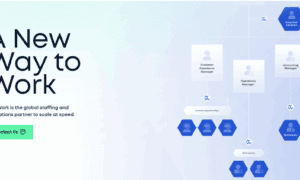Welcome to the world of advanced connectivity! As technology continues to evolve at breakneck speed, our lives are becoming increasingly interconnected. From smart devices and Internet of Things (IoT) gadgets to high-speed networks and cloud computing, it’s safe to say we’re swimming in a sea of complexity. But fear not – this blog post is your trusty compass, here to navigate you through the complexities and offer valuable tips and best practices for mastering the art of advanced connectivity. So buckle up and get ready for an enlightening journey into the digital realm where innovation meets convenience.
What is Advanced Connectivity?
In recent years, there has been a dramatic increase in the number of devices that are capable of connecting to the internet. This trend is only expected to continue, as more and more devices are designed with connectivity in mind. With so many devices able to connect to the internet, it’s important to understand the different types of connectivity that are available.
Advanced connectivity refers to the ability of a device to connect to the internet using multiple methods. This can include both wired and wireless connections. Advanced connectivity can also refer to the ability of a device to connect to multiple networks at the same time. For example, a smartphone with advanced connectivity can connect to both a cellular network and a Wi-Fi network simultaneously.
There are many benefits of advanced connectivity. One of the most significant advantages is that it allows for increased flexibility when connecting devices to the internet. For example, if there is an issue with one type of connection, another type of connection can be used as a backup. Additionally, advanced connectivity can often provide increased speeds and reliability when compared to traditional methods of connection.
Despite the benefits, there are also some challenges that come with advanced connectivity. One of the biggest challenges is ensuring that all devices are properly configured to take advantage of all available connections. Another challenge is managing data usage across multiple networks. This can be especially difficult if different networks have different data limits or cost structures.
Benefits of Advanced Connectivity
Advanced connectivity offers many benefits for both individuals and businesses. By staying connected, individuals can stay informed and up-to-date on current events, communicate with friends and family, access entertainment, and much more. For businesses, advanced connectivity can help improve communication and collaboration among employees, customers, and partners; drive innovation; and increase efficiency and productivity.
With so many benefits, it’s no wonder that advanced connectivity is becoming increasingly popular. But as the landscape of connectivity evolves, so do the challenges. Here are some tips to navigate the complexities of advanced connectivity:
1. Stay up to date on new technologies: As new technologies emerge, it’s important to stay informed about how they can be used to improve your connectivity.
2. Consider your needs: When choosing a technology or service, consider your specific needs and objectives.
3. Research your options: There are many different products and services available. Make sure to research your options before making a decision.
4. Be prepared for change: The landscape of advanced connectivity is constantly changing. Be prepared for change by staying flexible and adaptable.
Considerations When Choosing an Advanced Computer Network
When it comes to choosing an advanced computer network, there are a few key considerations to keep in mind. Here are some tips and best practices to help you navigate the complexities of advanced connectivity:
-Identify your needs: What type of network do you need? What are your specific goals and objectives?
-Scale up gradually: Start with a smaller, simpler network and then gradually scale up as needed.
-Evaluate cost vs. benefits: Make sure you weigh the costs and benefits of any potential solution before making a decision.
-Get expert help: Don’t try to tackle this alone – seek out expert help from those who have experience with advanced networks.
Examples of Advanced Connectivity Solutions
There are many advanced connectivity solutions available to businesses, and the right solution for your business will depend on your specific needs. Here are some examples of advanced connectivity solutions that can help you navigate the complexities of advanced connectivity:
1. SD-WAN: SD-WAN is a software-defined networking solution that allows you to manage and optimize your wide area network (WAN) connectivity. This solution provides a secure, cost-effective way to ensure that your applications and services are always available to your customers and employees no matter where they are located.
2. Cloud Connectivity: Cloud connectivity solutions provide scalability and control for businesses that need to move sensitive data between on-premise and cloud-based systems. These solutions offer secure connections for business applications, networks, storage, services, and devices across multiple different cloud providers.
3. Wireless Solutions: Wireless solutions offer organizations the flexibility to deploy custom networks that can meet their specific needs. With wireless solutions, businesses can extend their network reach, reduce capital expenses, simplify deployment, and improve user experience without needing to invest in additional cabling or hardware infrastructure.
4. Internet of Things (IoT): IoT solutions allow you to easily connect and manage the ever-growing number of devices within your network environment. From connected home appliances and smart lighting systems to digital kiosks or vending machines in remote locations – IoT solutions help you keep track of all connected devices with intelligent analytics allowing you improved visibility into the status of each device within your enterprise network.
Security and Encryption: How to Ensure a Secure Network Connection
In today’s business world, data security is more important than ever. A secure network connection is the first line of defense against data breaches and cyber attacks. Here are some tips to help you ensure a secure network connection:
1. Use a VPN: A Virtual Private Network (VPN) encrypts all data that is sent over the network connection. This makes it much more difficult for hackers to steal confidential information.
2. Use Firewalls: Firewalls act as a barrier between your network and the outside world. They can be configured to block certain types of traffic, such as malware or phishing attempts.
3. Keep Software Up-To-Date: Regularly updating your software helps close security holes that hackers can exploit. Be sure to install updates as soon as they are available.
4. Educate Employees: Employees should be aware of basic security measures, such as not sharing passwords or clicking on unknown links. A comprehensive security training program can help reduce the risk of human error.
By following these tips, you can help keep your network secure and protect your data from unauthorized access.
Best Practices for Configuring Your Advanced Network
There is no single silver bullet for configuring an advanced network, as the right configuration depends on the specific needs of your organization. However, there are some best practices that can help you navigate the complexities of advanced connectivity:
1. Centralize network management: Having a centralized platform for managing your network can simplify configuration and troubleshooting. A centralized platform also allows you to easily monitor and optimize performance.
2. Automate network tasks: Automation can help you reduce errors and save time when configuring your network. consider using automation tools to manage firmware upgrades, device provisioning, and other common tasks.
3. Use templates: Applying templates to your devices can help ensure consistent configuration across your fleet. Templates can also be used to quickly roll out changes or deploy new devices.
4. Take advantage of remote management: Remote management capabilities allow you to manage your network remotely, which can be helpful if you have distributed locations or a mobile workforce.
5. Keep documentation up to date: Documentation is critical for any complex system, and this is especially true for networks. Make sure to document your network architecture, configurations, and procedures so that they can be referenced as needed.
Common Pitfalls and Errors to Avoid with Advanced Networks
Advanced connectivity options offer a lot of potential for businesses, but they can also be complex and confusing. Here are some common pitfalls and errors to avoid when working with advanced networks:
1. Not clearly defining the goals and objectives of the network. What are you trying to achieve with this network? Without a clear goal in mind, it can be easy to get lost in the details and end up with a sub-optimal solution.
2. Underestimating the importance of planning and design. A well-designed network will be easier to manage and troubleshoot than one that was hastily put together. Make sure to take the time to plan out your network carefully.
3. Overlooking potential security risks. Advanced networks can be more vulnerable to security threats than simpler ones. Be sure to consider all potential risks and put appropriate safeguards in place.
4. Getting too complex for your own good. There’s no need to overcomplicate things – sometimes a simpler network is better than an overly complicated one. Keep things as simple as possible while still achieving your desired results.
5. Not staying current on updates and changes. The world of networking is constantly changing, so it’s important to stay up-to-date on the latest developments. This way you can make sure your network is as effective as possible.
Conclusion
Advanced technologies such as 5G, IoT and AI present numerous opportunities for companies, however without a clear strategy in place to manage the complexities of integrating these technologies it can be difficult. By using our tips and best practices outlined above, we hope that businesses will have a better understanding of how to navigate the complexity associated with advanced connectivity. Although there are many challenges when dealing with cutting-edge technology, getting ahead of the game now could prove invaluable when future projects require it.



































